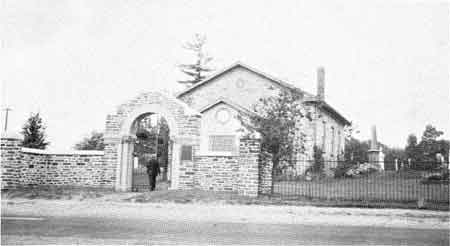ishes, the statement that he was a fully trained lawyer. He married
Harriett Sherwin, about whose father we have a long letter written by
a leading citizen of Cleveland, stating that he was connected with
many philanthropies. He was Ahimaas Sherwin, a bugle boy in the
American Revolution, who is buried near the entrance to Cleveland’s
enormous Lakeview Cemetery. Philip IV, while studying law became
a follower of the teachings of Fourier. What was there in him to
make him so zealous? Why did he sell much of his inheritance and
form a group of doubtful followers and go into the wilderness of
Sheboygan, Wisconsin, in order to carry out the idealistic teachings
of Fourier, each family putting all their goods and money into a
common fund and supposedly living entirely for each other? The
doubtful "followers" took all that Philip Cody had, except his
log cabin, after having imposed on his legal knowledge— and de-
manding care from him as to their physical needs, this because of his
medical training. When he died of brain fever, at the age of 31,
they buried him in an unknown, unmarked grave. The writings re-
garding his beliefs which he left behind are full of wisdom, idealism
and fortitude. He laid down his life for his friends, and those who
scarsely understood the teachings of the Mystic, Fourier. When
Philip died, he left his wife, Harriet, and their three sons, Lindus,
Darwin and Aldus. By a round about and difficult route, by boat,
and carriage and stage coach, Harriet’s brother, Frank Sherwin,
arrived at the Sheboygan log cabin and brought his sister and her
boys to their grandfather's home outside Cleveland. Harriet’s father
as trustee had discreetly saved out of Philip's early inheritance, e-
nough to care for his daughter and three boys. Darwin stayed with
Grandfather Sherwin, while Lindus and Aldus were boarded out with
other relatives. ln their teens, these two boys returned to the
family homestead where they made their living on farming and grow-
ing strawberries, doing this until they reached the age for their
inheritance. As young men, both Darwin and Aldus served in the
Civil War. There is a small book and original letters about "Darwin
Cody’s" Civil War experiences in the Columbus, Ohio, Archeological
Library.
This family did not destroy letters, so I found boxes and
boxes which had been moved from Lincoln, Nebraska, a family home
tor about five years, back to Cleveland and thence down to Cody
Villa, Babson Park, Florida. In one box I found one half of an old
will copied from a Massachusetts record and in another box the
other half of that will. The string on some bundles of letters had
broken. Many letters were scarcely readable. Some went back
to the days when there were no stamps—only the post office official
mark; but these letters contain the spirit of a vigorous and devout
family.
4.

